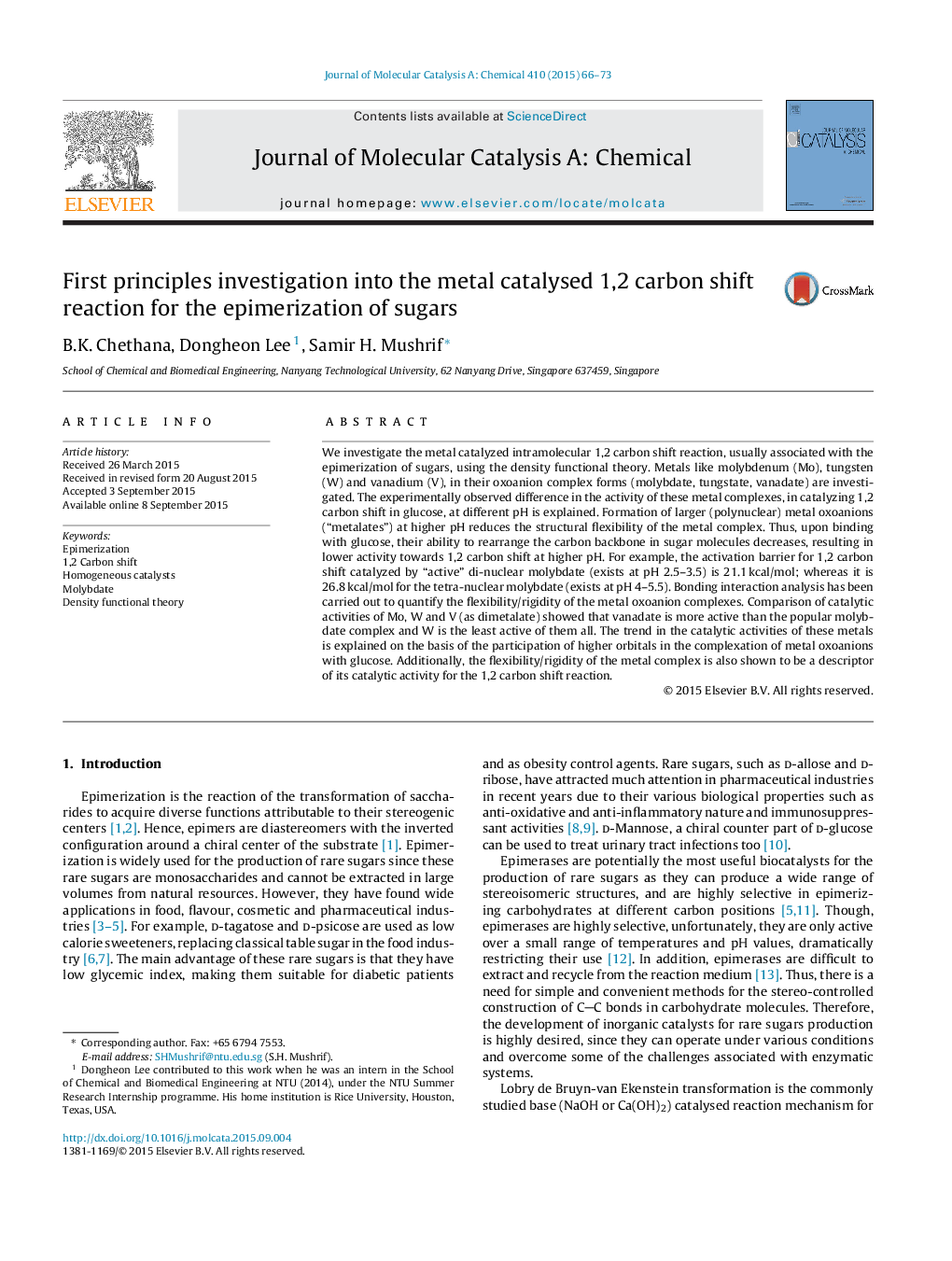| کد مقاله | کد نشریه | سال انتشار | مقاله انگلیسی | نسخه تمام متن |
|---|---|---|---|---|
| 64828 | 48372 | 2015 | 8 صفحه PDF | دانلود رایگان |
• Metal catalysed 1,2 carbon shift in sugars epimerization was investigated.
• Dimolybdate-sugar complex was found more active than the tetramolybdate complex.
• Vanadate shows higher activity than molybdate and tungstate.
• Rydberg orbitals of metals participate in the sugar metal complexation.
• Structural flexibility of the metal complex governs its catalytic activity.
We investigate the metal catalyzed intramolecular 1,2 carbon shift reaction, usually associated with the epimerization of sugars, using the density functional theory. Metals like molybdenum (Mo), tungsten (W) and vanadium (V), in their oxoanion complex forms (molybdate, tungstate, vanadate) are investigated. The experimentally observed difference in the activity of these metal complexes, in catalyzing 1,2 carbon shift in glucose, at different pH is explained. Formation of larger (polynuclear) metal oxoanions (“metalates”) at higher pH reduces the structural flexibility of the metal complex. Thus, upon binding with glucose, their ability to rearrange the carbon backbone in sugar molecules decreases, resulting in lower activity towards 1,2 carbon shift at higher pH. For example, the activation barrier for 1,2 carbon shift catalyzed by “active” di-nuclear molybdate (exists at pH 2.5–3.5) is 21.1 kcal/mol; whereas it is 26.8 kcal/mol for the tetra-nuclear molybdate (exists at pH 4–5.5). Bonding interaction analysis has been carried out to quantify the flexibility/rigidity of the metal oxoanion complexes. Comparison of catalytic activities of Mo, W and V (as dimetalate) showed that vanadate is more active than the popular molybdate complex and W is the least active of them all. The trend in the catalytic activities of these metals is explained on the basis of the participation of higher orbitals in the complexation of metal oxoanions with glucose. Additionally, the flexibility/rigidity of the metal complex is also shown to be a descriptor of its catalytic activity for the 1,2 carbon shift reaction.
Figure optionsDownload high-quality image (169 K)Download as PowerPoint slide
Journal: Journal of Molecular Catalysis A: Chemical - Volume 410, 15 December 2015, Pages 66–73
